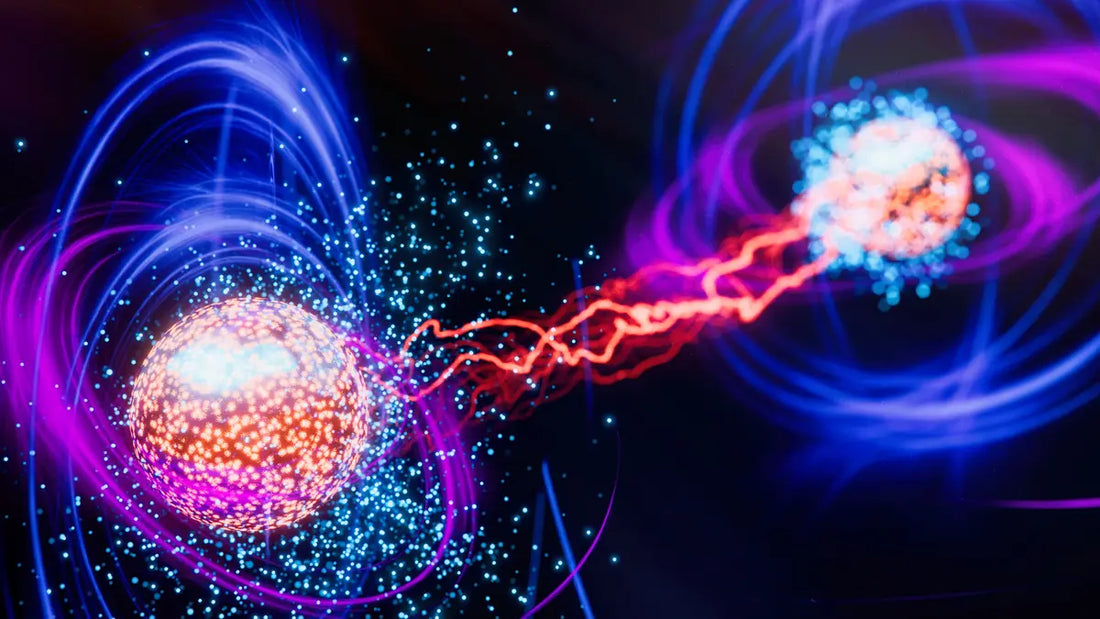CERN Detects Rare Higgs Boson Decays, Hints at New Physics
Dr. Mei Lin ChenCERN's ATLAS collaboration detects rare Higgs boson decays, offering potential glimpses into physics beyond the Standard Model.

CERN's ATLAS collaboration has made significant strides in particle physics by detecting two exceptionally rare Higgs boson decay processes. These findings, presented at the European Physical Society Conference on High Energy Physics, not only deepen our understanding of the Higgs boson but also offer potential glimpses into physics beyond the Standard Model.
The detection of these rare decays, specifically the Higgs boson decaying into a pair of muons and into a Z boson and a photon, provides valuable insights into the fundamental forces and particles that govern our universe. This research pushes the boundaries of our knowledge and opens new avenues for exploration in the quest to unravel the mysteries of the cosmos..
Highlights
- ATLAS collaboration finds evidence of Higgs-boson decays to muons (H→μμ).
- Improved sensitivity in Higgs-boson decays to a Z boson and a photon (H→Zγ).
- These rare decays offer hints of physics beyond the Standard Model.
Read More: Xbox to be like Office: Everywhere, says Nadella
Top 5 Key Insights
• Higgs Decay to Muons: The Higgs boson decaying into a pair of muons (H→μμ) occurs in only 1 out of every 5000 Higgs decays. Despite its rarity, this process offers the best opportunity to study the Higgs interaction with second-generation fermions and understand the origin of mass across different generations. Until now, interactions have only been observed with third-generation particles.
• Higgs Decay to Z Boson and Photon: The decay into a Z boson and a photon (H→Zγ) is especially intriguing because it proceeds via a loop of virtual particles. The presence of new, unknown particles contributing to this loop could provide hints of physics beyond the Standard Model. Identifying this decay mode is challenging but crucial for advancing our understanding.
• Statistical Significance: The ATLAS collaboration's latest result, combining Run 2 and Run 3 data, reported an excess of 2.5 standard deviations for the H→Zγ process. While not yet at the 5 standard deviations required for a definitive observation, it represents the most stringent expected sensitivity to date for measuring the decay probability of H→Zγ. This result builds upon previous findings and strengthens the evidence for this rare decay.
• Importance of Rare Decays: Rare Higgs decays are a high priority because each particle has a special relationship with the Higgs boson. Studying these decays allows scientists to probe the Standard Model and search for deviations that could indicate new physics. The existence of new particles could significantly affect these rare decay modes, making their study crucial.
• Future Research Directions: Continued research with larger datasets and improved technology could reveal small differences that open a window into a new set of theories. The focus remains on improving the precision of Higgs boson measurements and actively searching for signs of new physics. These efforts aim to address the ongoing frustration of not finding evidence beyond the Standard Model despite the LHC's success with the Higgs boson discovery.
Read More: Jessica Alba's Net Worth: Acting, Business & Real Estate
Expert Insights
Pamela Ferrari, physics coordinator for CERN’s ATLAS experiment: "Each particle has a special relationship with the Higgs boson, making the search for rare Higgs decays a high priority".
Read More: AI Search Engines Favor Less Popular Sources: Study
Wrap Up
The detection of these rare Higgs boson decays marks a significant step forward in particle physics, offering tantalizing hints of what lies beyond our current understanding. As scientists continue to analyze data from the Large Hadron Collider and refine their experimental techniques, the possibility of uncovering new particles and forces becomes increasingly real.
These findings underscore the importance of continued exploration and innovation in the pursuit of knowledge, driving us closer to a more complete picture of the universe.
Read More: Trump's $80B Nuclear Reactor Plan Fuels AI Ambitions
Author
Dr. Mei Lin Chen - A dedicated science communicator and research analyst based in Singapore, with a background in biomedical science. She translates complex scientific findings into accessible insights on breakthroughs and their future implications for Enlightnr.More to Explore
- Choosing a selection results in a full page refresh.
- Opens in a new window.




